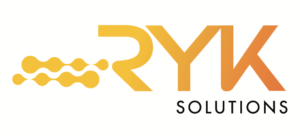About RYK and TelemetRYK Constant Monitoring™

About RYK Solutions™ and TelemetRYK Constant Monitoring™
Monitoring vital signs in patients is a crucial part of essential care in hospitals and care facilities. The National Center for Biotechnology Information states that, “vital signs, including respiratory rate, oxygen saturation, blood pressure, pulse and temperature, are the simplest, cheapest and probably most important information gathered on hospitalized patients.”[1]
Additionally, the Center goes on to say that “today, vital signs play an important role in emergency departments (ED) and on the wards, to determine patients at risk of deterioration. Even though it is accurately predicted by vital sign changes, clinical deterioration often goes unnoticed, or is not detected until it is too late to treat. This is mainly caused by inadequate recording of vital signs or as a result of an inappropriate response to abnormal values. Among nurses and doctors there is insufficient knowledge and appreciation of vital sign changes and their implications for patient care. The importance of monitoring vital signs in clinical practice is indisputable.” [2]
In recent years, there have been key developments in assistive technology, devices and applications to better help care workers and staff keep a close eye on their patients, especially during vulnerable times such as a transition from hospital to an acute care or rehab community, or home. However, implementing the technology in facilities has been a challenge to date. This is, in part, due to the shortage of staff available to administer the technology.
- • According to CNN, the U.S. will face a severe shortage of:
- 446,300 Home health aides
- 98,700 Medical and lab technologists and technicians
- 95,000 Nursing assistants
- 29,400 Nurse practitioners.[3]
The shortage of jobs has a direct impact on patient care, including treatments and diagnostic tests, as well as basic monitoring for changes in vital signs.
Suggested solutions to this challenge include the implementation of remote patient monitoring and telemedicine such as that available through TelemetRYK™. Having doctors and nurses connected through this technology not only improves communication between staff and families, and supports nurses and aids, but also reduces hospital readmissions and the high cost associated with readmissions.
According to the United Health Foundation, in the United States, “16 percent of older adults with Medicare insurance returned to the hospital within 30 days of discharge.[4]
The average cost of readmission for those aged +65 was 5.3% higher than the cost of the initial hospital visit. Total annual costs for hospital readmissions are pegged at $41.3 billion. [5]
However, the reality for many care facilities is that avoidable readmissions are even more costly to funding, considering the federal government’s accountable care organization (ACO) guidelines for readmissions. In today’s zero tolerance environment, there’s no room for error.
TelemetRYK Constant Monitoring™ by RYK
RYK Solutions™ is making TelemetRYK™ available for the first time to clinically sophisticated facilities. With elegantly designed biosensors for seamless data collection, TelemetRYK™ instantly captures complex medical information and health data while continuous monitoring vital signs. This sophistication ensures a rapid response to patient emergencies while providing longer-form data for patient analytics that is revolutionizing patient outcomes.
Currently, there’s nothing else like TelemetRYK™ available on the market. TelemetrRYK™ is singularly providing constant, 24-hour monitoring of medically complex patients at their most vulnerable periods of recovery.
[1] Brekke, Idar Johan. The value of vital sign trends in predicting and monitoring clinical deterioration: A systematic review. NCBI US National Library of Medicine and National Institutes of Health PLoS One. 2019: 14(1): e.0210875. Published online 2019 Jan 15. Available online: https://www.ncbi.nlm.nih.gov/pmc/articles/PMC6333367/
[1] Brekke, Idar Johan. The value of vital sign trends in predicting and monitoring clinical deterioration: A systematic review. NCBI US National Library of Medicine and National Institutes of Health PLoS One. 2019: 14(1): e.0210875. Published online 2019 Jan 15. Available online: https://www.ncbi.nlm.nih.gov/pmc/articles/PMC6333367/
[1] Kavilanz, Parja. The US can’t keep up with demand for health aides, nurses and doctors. CNN Business. https://money.cnn.com/2018/05/04/news/economy/health-care-workers-shortage/index.html
[1] United Health Foundation. American’s Health Rankings Senior Report. Published 2019. Available online: https://www.americashealthrankings.org/explore/senior/measure/hospital_readmissions_sr/state/ALL
[1] United Health Foundation. American’s Health Rankings Senior Report. Published 2019. Available online: https://www.americashealthrankings.org/explore/senior/measure/hospital_readmissions_sr/state/ALL
